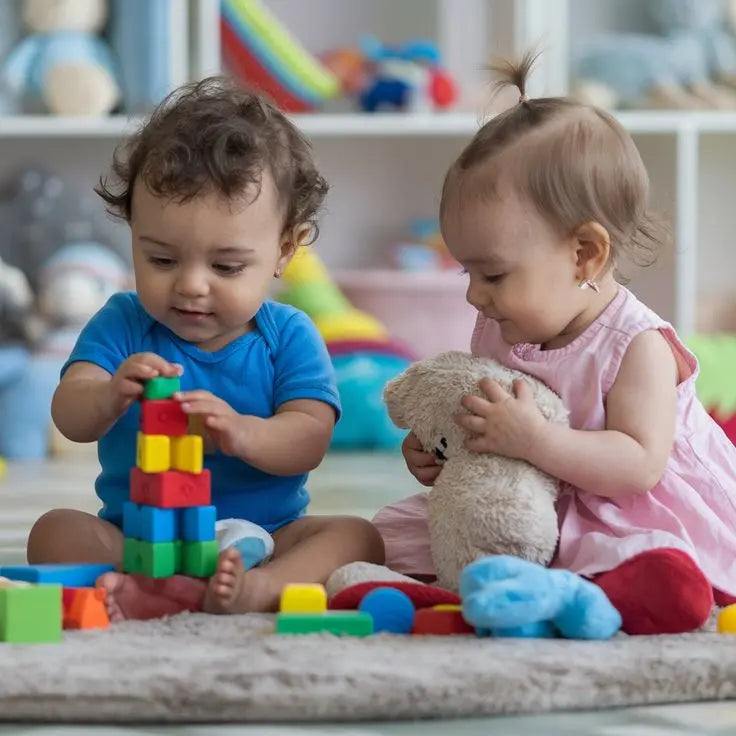
How Do Toys Help Child Development? A Deep Dive into Play-Based Learning
Share
Why Play is Essential for Brain Development
From an early age, children engage with the world through their senses. Every new texture, sound, or colour stimulates their brain and helps build connections that form the foundation of memory, language, and problem-solving skills.
Educational toys take this natural curiosity and turn it into a learning experience. Whether it’s through sensory exploration, numeracy games, or imaginative play, these toys encourage critical thinking and enhance cognitive development.
Building Early Learning Skills with Interactive Play
Not all toys are created equal when it comes to fostering learning. The best ones challenge and engage children in different ways:
🔹 Hands-On Exploration – Toys that involve touching, stacking, or linking pieces together improve fine motor skills and hand-eye coordination. Sensory-based activities, such as felt puzzles or textured cards, enhance tactile learning and concentration.
🔹 Problem-Solving & Logical Thinking – Early exposure to puzzles, number games, and sequencing activities helps develop reasoning skills. Toys that introduce patterns, counting, and sorting tasks strengthen a child’s ability to recognise relationships between objects and concepts.
🔹 Creative Expression – Art-based activities and open-ended play encourage imagination and self-expression. DIY craft kits, storytelling flashcards, and pretend-play toys allow children to explore ideas, emotions, and narratives.
Encouraging Screen-Free Learning
In today’s digital age, it’s easy for kids to spend hours on screens. However, hands-on learning experiences are crucial for brain development. Research suggests that excessive screen time can impact focus, social skills, and creativity.
By introducing interactive and sensory-rich toys, children get to explore, experiment, and learn through real-world experiences. Activities like matching games, role-play, and tactile learning sets encourage them to engage actively rather than passively consuming content.
Choosing the Best Learning Toys for Your Child
Parents often wonder, What are the best learning toys for children? The right toys should be engaging, age-appropriate, and beneficial for overall growth. Here’s a quick guide:
-
Infants (0-12 months): Toys for newborns should focus on visual development, such as High Contrast Flashcards for Newborns. From 6-12 months, sensory exploration becomes important, making the Touch & Feel Sensory Activity Kit a great option for tactile learning and engagement.
-
Toddlers (1-3 years): This stage is crucial for fine and gross motor skill development. Preschool Vegetable Plush Set, Sea Animals Plush Toy Set, and the Fishing Pond Game encourage sensory exploration and active play. Additionally, 3D A2Z Alphabet Flashcards help in early language recognition.
-
Preschoolers (3-5 years): Toys that introduce numbers, colours, and motor skills are ideal. The Número - The Counting Caterpillar enhances fine motor skills and numerical understanding, while the Rainbow Popsicle Colour Matching Game helps with colour recognition and cognitive skills. Open-ended play options like the DIY Rainbow and Clouds Craft Kit further encourage creativity and exploration.
Final Thoughts
When choosing educational toys, look for those that promote engagement, problem-solving, and creative exploration. Playtime should be fun, but it should also be an opportunity for growth, discovery, and meaningful learning.
The right toys spark curiosity and nurture essential skills, making them valuable tools in your child’s early development journey.
Looking for engaging, screen-free learning options? Explore a range of thoughtfully designed educational toys at GiGeeGaGaa and make playtime a meaningful learning experience!
